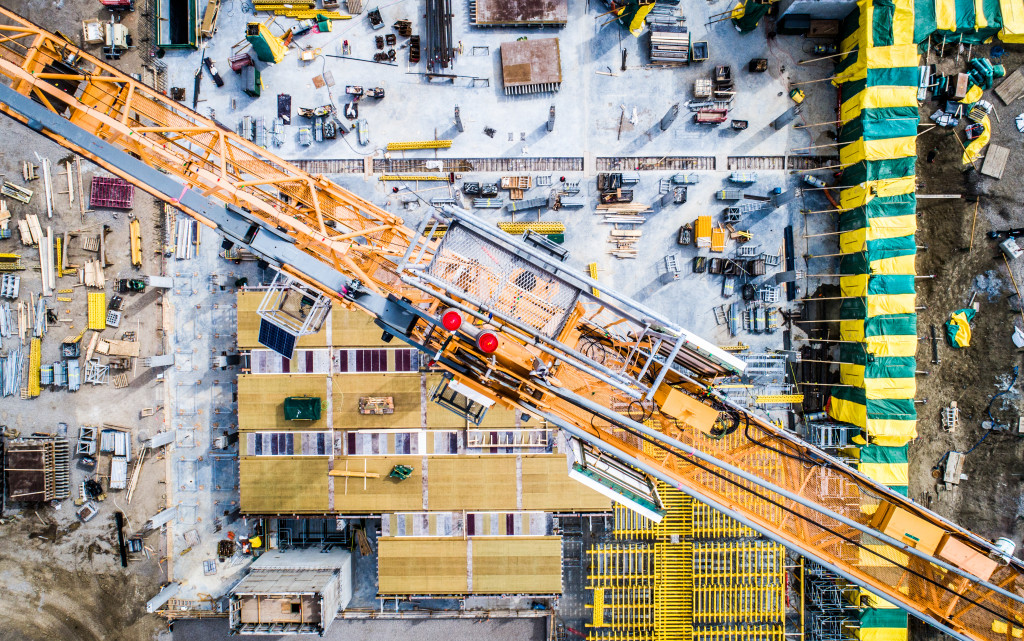- Adherence to proper lifting techniques and the use of lifting equipment prevents injuries in construction.
- Team lifts and proper attire significantly minimize the risk of accidents during heavy lifting operations.
- Comprehensive training sessions on safe lifting practices empower workers and enhance workplace safety.
- Regular rest periods during lifting duties prevent injuries and promote overall worker health.
In the high-risk construction environment, adhering to best practices for safe lifting is paramount. It’s about protecting workers from physical injuries and ensuring the project’s smooth operation.
Here, workers are often required to lift, move, and place heavy loads, which, if not handled correctly, can lead to serious accidents. Observing these practices, construction sites can significantly mitigate the risks associated with lifting and thus foster a safer working environment.
Safety Measures
Several safety measures need to be taken when lifting heavy loads. Here are some of the most important ones:
Proper Lifting Techniques
Proper lifting techniques are considered the best practice for safe lifting in construction. These techniques involve a set of methods that workers should follow when lifting heavy objects. Adhering to these techniques is crucial as it can prevent personal injuries such as back strains, muscle injuries, and bone fractures.
Such incidents can result in workers taking time off, affecting productivity and increasing insurance costs. Proper lifting techniques consist of several factors, such as planning the lift, using equipment to lift heavy loads, and maintaining proper posture during the lift. By following such techniques, workers can perform their lifting tasks more efficiently and safely.
Use of Lifting Equipment

Using the right lifting equipment is considered a best practice for safe lifting in construction. This includes a variety of devices and tools designed to safely and efficiently lift heavy loads. The importance of utilizing the proper equipment cannot be overstated, as it not only helps prevent accidents and injuries but also ensures that the load is secured and does not cause damage to surrounding structures or individuals.
When considering lifting equipment, one effective option is a durable round sling. These slings are made from tough materials, such as polyester, and are designed to handle various heavy loads. Additionally, they are lightweight and flexible, making them easy to handle and store when not in use. Incorporating the right lifting equipment into construction practices is crucial for maintaining a safe work environment and preventing accidents.
Team Lifts
Team lifts have emerged as a remarkable best practice in the construction industry. This lifting method utilizes more than one person to lift heavy equipment, machinery, or materials as needed on a construction site. The significance of team lifts lies in the decreased risk of injuries during heavy lifting operations.
When multiple individuals coordinate and serve as a team, there are fewer chances for any single member to suffer from overexertion, muscle strains, or other injuries that could result from performing the lift alone. All construction workers need to embrace the team lift concept as a best practice to minimize the possibility of workplace injuries and ensure the safety of everyone on a job site.
Proper Attire

Proper attire is an essential consideration for workers in the construction industry when lifting heavy objects. It involves wearing clothing and protective gear appropriate for the task, such as sturdy boots, gloves, and safety glasses.
This best practice is crucial for ensuring safety in the workplace as it minimizes the risk of injuries and accidents due to loose clothing getting caught on equipment or inadequate protection from falling debris.
Workers who prioritize proper attire demonstrate a commitment to personal and collective responsibility for their safety and that of their coworkers and play an instrumental role in maintaining a safe lifting environment.
Training
Training is widely regarded as one of the best practices for ensuring safety in lifting within construction sites. Employers can drastically reduce the risk of accidents and mishaps by providing workers with comprehensive and practical instruction on proper techniques and equipment usage.
While it may seem like a simple aspect of the job, the reality is that improper lifting techniques and negligence can cause significant harm to workers and those around them. Companies must invest in training sessions to mitigate these risks as part of their safety protocol.
Not only does this enhance the overall safety culture in the workplace, but it also ensures that each worker is equipped with the knowledge and practical skills they need to execute their duties safely and efficiently. Overall, training for safe lifting practices is an invaluable tool that empowers workers to take control of their safety and work confidently towards a safer, more secure future.
Rest Periods
Rest periods ensure a safe and successful lifting experience in the construction industry. While many workers may overlook the importance of taking breaks during their lifting duties, experts know this is crucial to preventing injuries. Rest periods allow the body to recover from the physical strain of lifting heavy materials, reducing the risk of accidents and musculoskeletal disorders.
Rest periods can help prevent immediate injury and positively benefit workers by promoting overall health and well-being. Taking the time to rest during lifting duties is a best practice that every worker should prioritize for a safe and successful construction career.
Safety is the keystone of successful and productive operations within the construction industry. Hence, it’s incumbent upon all stakeholders in the construction industry to diligently implement and abide by these safety measures. Remember, safety does not happen by accident; it requires conscious, consistent effort from everyone involved. Start making safety a priority today!


